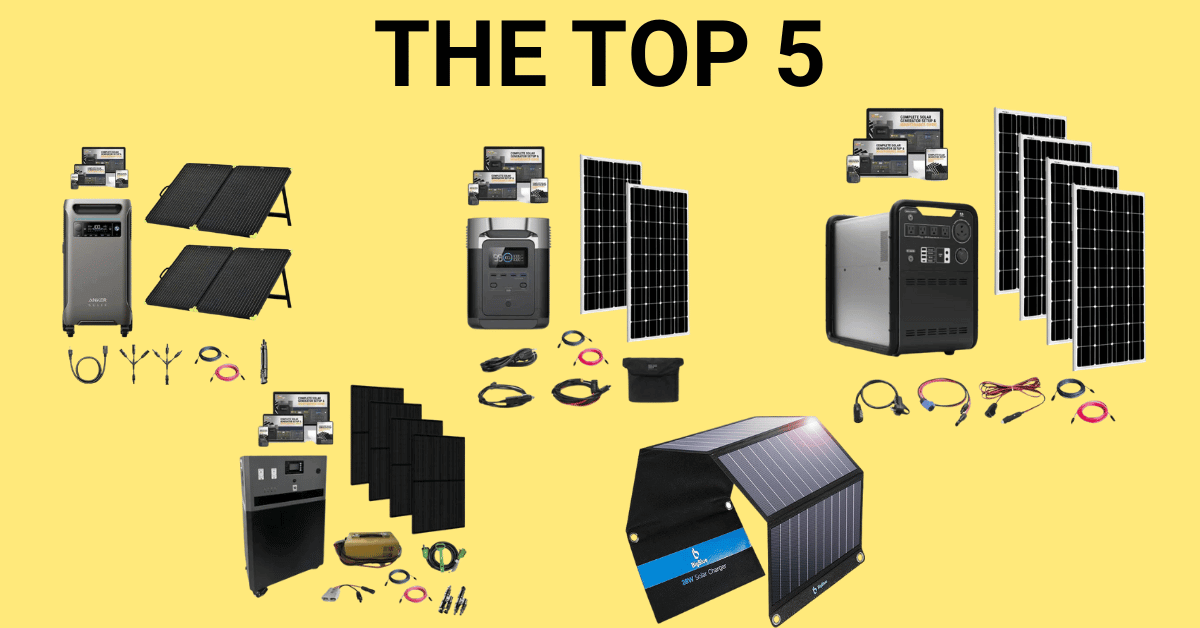In an era where power is king, staying charged off the grid has never been more crucial.
Whether you’re prepping for emergencies, living the van life, or setting up a remote workstation, a reliable solar charger battery bank can be your lifeline to the modern world.
But with so many options out there, how do you choose the right one?
As someone who’s tested more solar chargers than I care to admit, I’ve learned that not all units are created equal.
I once bought a cheap model for a week-long camping trip, only to find myself with a bunch of dead devices by day three. Talk about a wake-up call!
Today, we’re diving deep into the world of portable solar power to bring you the cream of the crop. We’ll be looking at five powerhouses that stand out in 2025 for their capacity, charging speed, durability, and overall value.
Whether you’re an off-grid enthusiast, a prepper, or just someone who wants to reduce their carbon footprint, this guide is for you.
For the impatient power enthusiasts (like me), here are quick links to the best 5 solar charger battery banks:
What Makes a Great Solar Charger Battery Bank?
Before we jump into our top picks, let’s break down what separates the wheat from the chaff in the world of solar charger battery banks.
Capacity: Power When You Need It
Capacity is king in the world of portable power. Most folks I talk to are looking for at least 10,000mAh, which can charge a smartphone 2-3 times. But if you’re planning to power larger devices like laptops or small appliances, you’ll want to look at options with 20,000mAh or more.
Charging Speed: Time is of the Essence
Nobody wants to wait all day for their devices to charge. The best solar charger battery banks use high-efficiency monocrystalline or polycrystalline panels that can convert more sunlight into usable power. Look for models that offer fast charging capabilities, both for the bank itself and your devices.
Durability: Built to Last
When you’re dealing with outdoor gear, durability is non-negotiable. I learned this the hard way when my first solar charger gave up the ghost after a light drizzle.
Now, I always check the IP rating. Aim for IP67 or IP68, which means your charger can handle dust, dirt, and even temporary submersion in water.
Portability vs. Power
Here’s where it gets tricky. You want enough power to keep your devices running, but you don’t want to lug around a brick. The key is finding that sweet spot between capacity and weight.
Consider your specific needs – are you car camping or backpacking? This will help you decide how much bulk you’re willing to tolerate.
Additional Features: The Extras That Count
Don’t overlook the little things that can make a big difference:
- Multiple ports for charging several devices at once
- Pass-through charging capability
- Built-in flashlight for nighttime emergencies
- LED indicators to show remaining power
- Overcharge protection to keep your devices safe
Now that we know what to look for, let’s dive into our top 5 picks for 2024. Whether you’re an eco-warrior, a digital nomad, or just someone who likes to be prepared, one of these solar charger battery banks is sure to fit the bill.
Top 5 Solar Charger Battery Banks of 2024
In the world of portable power, these five units stand out for their impressive capabilities and versatility. Let’s dive into what makes each of them unique.
1. EcoFlow DELTA 1800W / 1300Wh Solar Generator: The Versatile Powerhouse
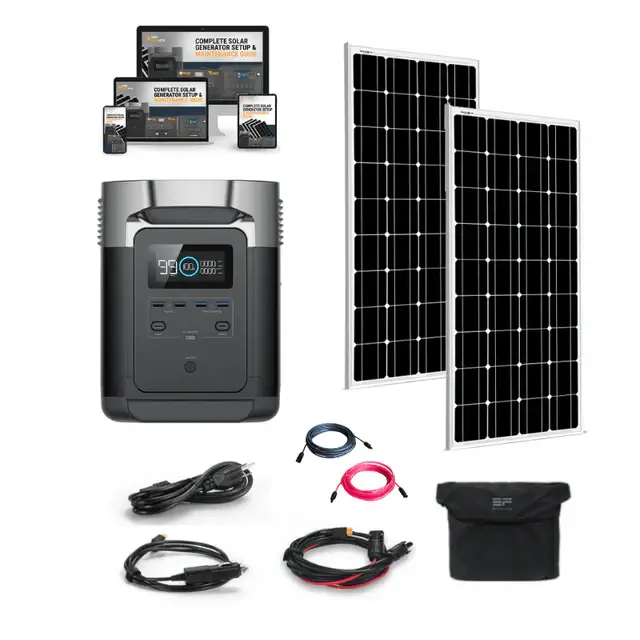
The EcoFlow DELTA 1800 is a compact yet powerful solution for various power needs.
Key Specifications:
- Capacity: 1260Wh
- AC Output: 1800W (3300W surge)
- Solar Input: 400W max
- Weight: 30.9 lbs (14kg)
Pros:
- High output power for its size
- Fast charging with X-Stream technology (1200W max)
- Simultaneous use and solar charging capability
- Portable and relatively lightweight
Best For: Camping trips, RV enthusiasts, and home backup for essential devices.
The DELTA 1800 shines in its versatility. I’ve used it on weekend camping trips, and it easily powered our portable fridge, lights, and even a small electric grill. Its ability to charge while in use is a game-changer for extended off-grid stays.
2. FORCE 15K: The Home Power Station
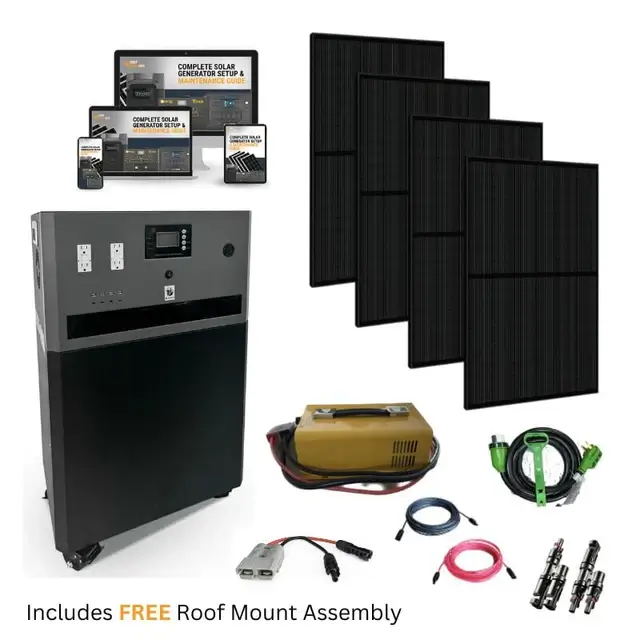
When it comes to raw power and capacity, the FORCE 15K is in a league of its own.
Key Specifications:
- Capacity: 15kWh Lithium Iron Phosphate
- Output: 8,000W at 120V or 240V
- Solar Input: Up to 4,000W
- Weight: 395 lbs (split into two pieces for easier handling)
Pros:
- Massive capacity, more than 4x Bluetti AC300
- Built-in split phase output
- 10-year warranty
- Quiet operation (50 decibels during standard use)
Best For: Off-grid living, whole-home backup, and power-intensive applications.
The FORCE 15K is not just a power station; it’s a complete energy solution. During a recent power outage in my neighborhood, this beast kept my entire home running smoothly, including the refrigerator, AC, and even my home office setup.
3. Anker SOLIX F3800: The Tech-Savvy Choice
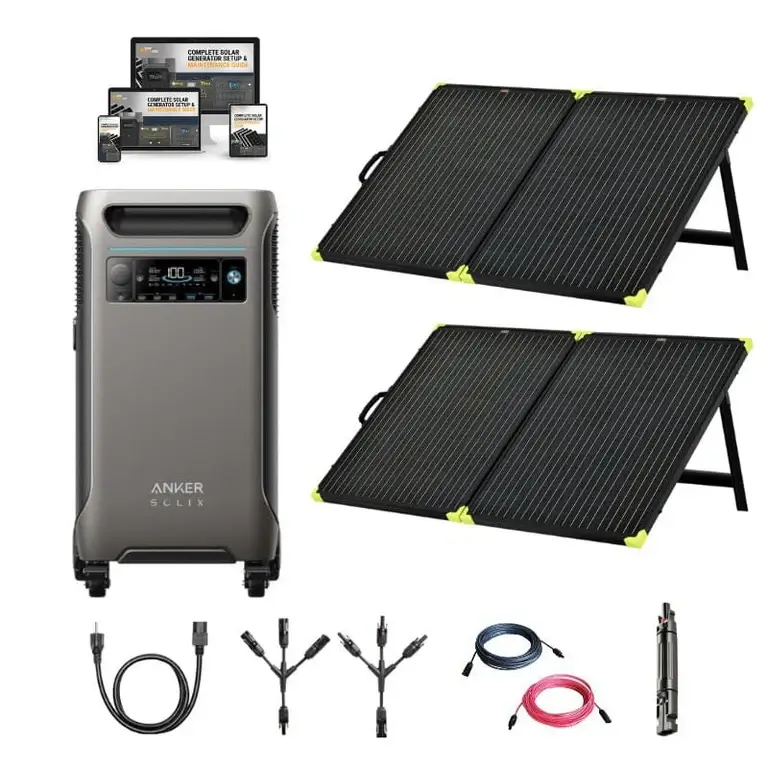
Anker brings its reputation for quality to the high-capacity power station market with the SOLIX F3800.
Key Specifications:
- Capacity: 3840Wh
- AC Output: 6000W (120V/240V)
- Solar Input: 2400W max
- Weight: 132 lbs (60kg)
Pros:
- High power output suitable for most home appliances
- Multiple charging options including 100W USB-C ports
- Smart app control for customized power management
- Expandable capacity
Best For: Tech-savvy users, home offices, and as a reliable backup for power-hungry devices.
I’ve been impressed by the F3800’s ability to handle multiple high-draw devices simultaneously. Its app control feature allows me to monitor and manage power usage remotely, which is incredibly convenient.
4. Hysolis MPS3K 4,500Wh / 3,000W: The All-in-One Solution
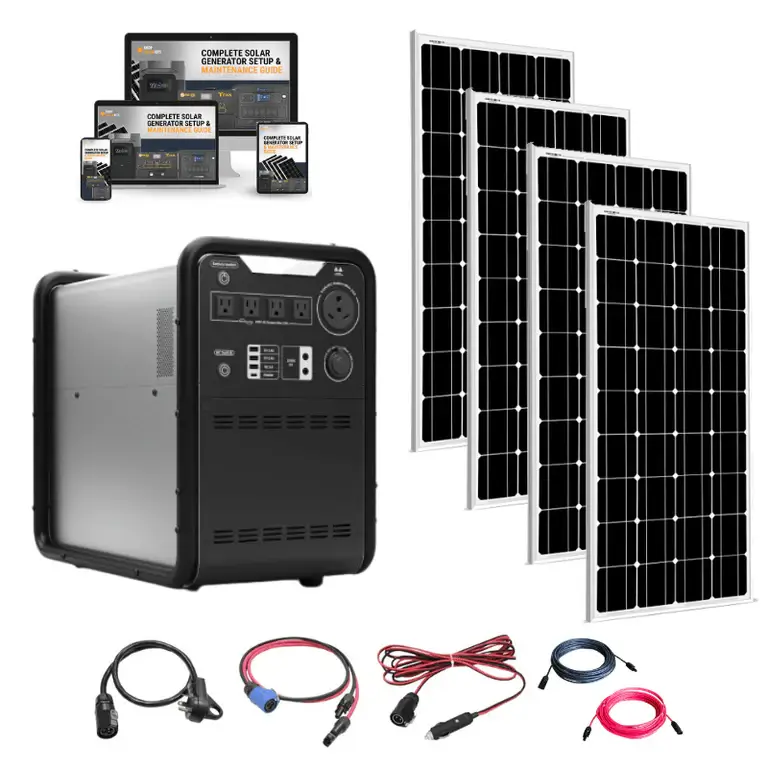
The Hysolis MPS3K offers a great balance of capacity and output in a compact package.
Key Specifications:
- Capacity: 4,500Wh
- AC Output: 3,000W (6,000W surge)
- Solar Input: MPPT 48V/30A
- Weight: 120 lbs (55kg)
Pros:
- Substantial capacity for extended use
- Pure sine wave output for sensitive electronics
- Compact design for its capacity
- Versatile charging options (solar, AC, car)
Best For: RV owners, off-grid cabins, and as a robust home backup solution.
The MPS3K has been my go-to for powering my off-grid cabin. Its compact size belies its impressive capacity, and I’ve found it reliable for running everything from power tools to my small refrigerator.
5. BigBlue 28W Solar Charger: The Budget-Friendly Option
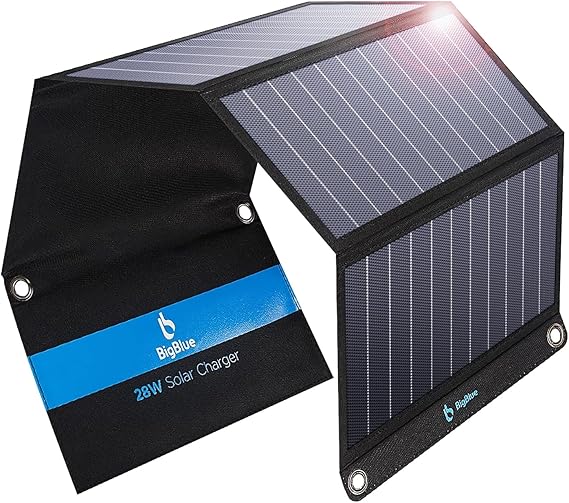
For those dipping their toes into solar charging, the BigBlue 28W Solar Charger offers great value.
Key Specifications:
- Output: 28W
- Weight: 1.3 lbs (590g)
- Charging Ports: 3 USB ports
Pros:
- Highly affordable
- Ultra-portable folding design
- Weather-resistant
- Built-in ammeter
Cons:
- No built-in battery (charges devices directly)
- Lower output compared to larger units
Best For: Hikers, budget-conscious consumers, and those new to solar charging.
This little gem is perfect for keeping your phone and other small gadgets topped up during day hikes or beach trips. It’s not going to power your campsite, but for personal electronics, it’s a great entry point into the world of solar charging.
How to Choose the Right Solar Charger Battery Bank for You
Choosing the perfect solar charger battery bank boils down to understanding your specific needs. Here are some key factors to consider:
- Assess your power needs: Make a list of devices you’ll need to charge and their power requirements.
- Consider your typical usage scenarios: Are you car camping or backpacking? This affects the weight and size you can manage.
- Balance features with budget: More power usually means a higher price tag. Determine what features are must-haves vs. nice-to-haves.
- Check compatibility: Ensure the charger can handle your devices’ voltage requirements.
Remember, the best solar charger battery bank is the one that fits your lifestyle and keeps you powered when you need it most.
Maintaining and Caring for Your Solar Charger Battery Bank
Investing in a quality solar charger battery bank is just the first step. To ensure it serves you well for years to come, proper maintenance is key. Here are some tips I’ve learned through trial and error:
1. Keep It Clean
Solar panels work best when they’re spotless. I make it a habit to wipe down my panels with a soft, damp cloth after each use. For stubborn dirt, a mild soap solution does the trick. Just remember to dry them thoroughly afterward.
2. Store It Right
Extreme temperatures are the enemy of battery life. I learned this the hard way when I left my first solar charger in a hot car – its capacity was never the same. Now, I always store my units in a cool, dry place when not in use.
3. Charge Regularly
Even if you’re not using it, give your battery bank a charge every 3-4 months. This helps maintain the battery’s health and prolongs its overall lifespan.
4. Protect from Water
While many units are water-resistant, they’re not waterproof. I always keep my charger in a dry bag when there’s a chance of rain. It’s a simple precaution that can save you from a costly replacement.
5. Use Compatible Solar Panels
If your battery bank doesn’t come with built-in panels, make sure you’re using compatible ones. Mixing and matching can lead to inefficient charging or even damage your unit.
Troubleshooting Common Issues
Even the best solar charger battery banks can act up sometimes. Here are a few common issues and how to address them:
- Slow Charging: Ensure your panels are positioned for optimal sunlight. Sometimes, even a slight angle adjustment can make a big difference.
- Not Charging Devices: Check your cables. I once spent hours troubleshooting only to find out I was using a faulty USB cord.
- Unexpected Shutoffs: This could be a safety feature kicking in. Consult your manual for specific error codes and what they mean.
- Reduced Capacity: Batteries naturally degrade over time. If you notice a significant drop, it might be time for a replacement.
Conclusion: Powering Your Adventures
In the world of outdoor adventures and off-grid living, a reliable power source can make all the difference. Whether you’re a weekend warrior keeping your smartphone charged on a hiking trip, a digital nomad powering your mobile office, or a prepper ensuring you’re ready for anything, the right solar charger battery bank is an invaluable tool.
From the powerhouse Force 15K that can be your whole house power source to the budget-friendly BigBlue 28W Solar Charger, there’s an option out there for every need and budget. Remember, the best choice for you depends on your specific requirements – consider your power needs, portability preferences, and typical usage scenarios when making your decision.
As we move towards a more sustainable future, harnessing the power of the sun isn’t just convenient – it’s responsible. By choosing a solar charger battery bank, you’re not only ensuring you stay connected in the great outdoors, but you’re also taking a small step towards reducing your carbon footprint.
So, which solar charger battery bank caught your eye? Are you ready to break free from the grid and power your next adventure with the sun? Remember, the great outdoors is calling, and now you’ve got the knowledge to stay charged, no matter where your wanderlust takes you.
Happy charging, and may your devices never run out of juice when you need them most!

